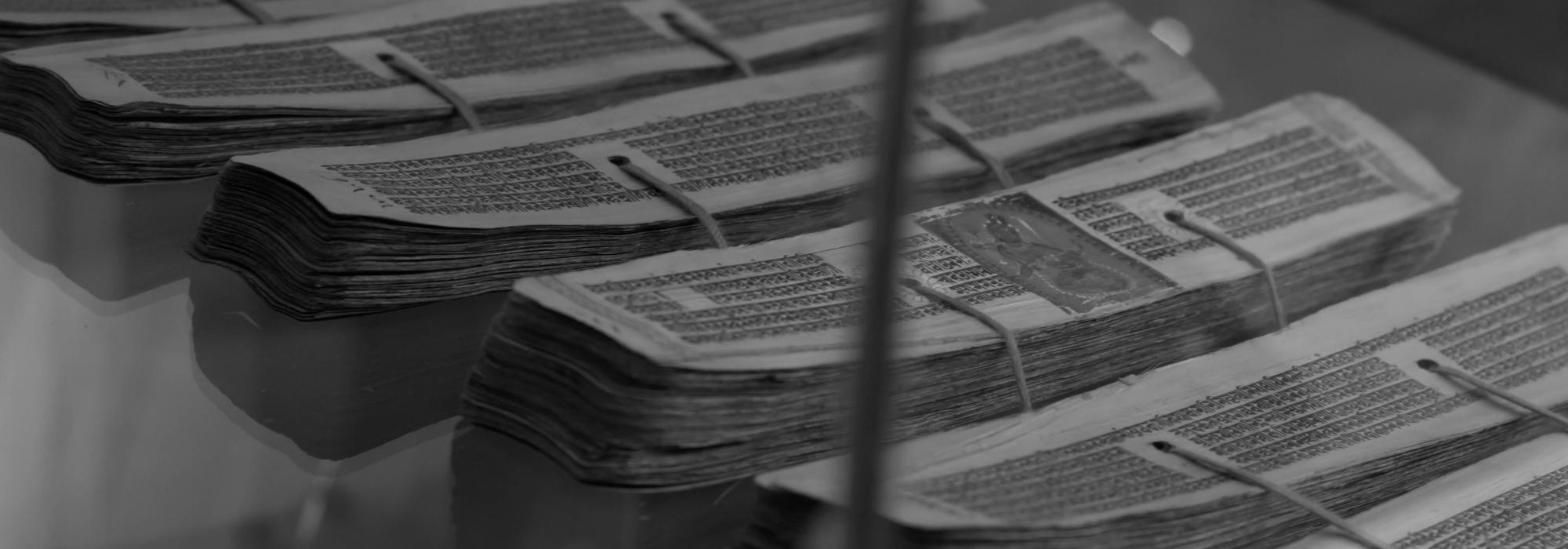The word ‘Shaastra’ means ‘to rule’ or ‘to govern’ and is derived from the root ‘शासु-अनुशिष्टौ’. ‘To govern’ means to protect like a king, and to keep everything that comes within his purview under control. However, this does not mean that shaastra is dictatorial, rigid and restrictive. Just like a forest protects a lion and the lion in turn protects the forest (popularly known as ‘vana-simha-nyaaya’), the shaastra and all the aspects that come under its purview mutually safeguard each other. Just like a king, however powerful he might be, is always under the control of dharma and the dharma reigns supreme, there is a fundamental frequency/ dharma underlying every shaastra. Such fundamental frequencies always draw inspiration from natural law. Vedantic philosophy that underlies shaastra can be compared to the rocks that form the shores on both sides of a flowing river. If the shores grow into the river, the width of the river is reduced, and this can result in drying up of its waters. On the other hand, if the river over-flows and floods its shores, its course might get lost and its eternal flow will be broken. It is thus inevitable and essential to have shaastra. Shankaracharya says – ‘ज्ञापकं हि शास्त्रं न कारकमिति स्थितिः’ (Brhadaranyakopanishat 1.4.10), a shaastra is essentially a reminder. Shaastra can neither inspire creativity nor kindle it.We should not look down upon it just because its sole purpose is to help art remain within a framework. It will suffice if we acknowledge its role in our lives and accept its governance. A shaastra is primarily a work of scholarship and it depends less on creative talent (pratibhaa). Talent is something that is independent of external factors and depends only on the individual. It is just like the aatman that is unaffected by external attributes. However, scholarship depends on space, time and on the individual. Only when talent and scholarship blend in the right proportion it can result in the creation of Bliss (ananda) that can be felt by all. Shaastra is something that helps in such a creation. Scholarship can be compared to the body and shaastra to the breath. Just like breath is a link between soul and body, shaastra is a bridge between talent and scholarship.
There is a misconception in our society that shaastra is only about blind-beliefs, irrational limitations and dictatorship. Shaastra is not a brainchild of people lacking talent; it has been developed by creative minds too. Talent can be compared to a waterfall: scholarship is like a device which helps convert kinetic energy in the water into electricity. Shaastra is an engineering management technique, which will help put all of this in place. Lights and audio equipment that are energized by electricity thus generated are the ‘arts’. Thus, scholarship gives robustness to creative talent and shaastra gives structure and the capacity of recreation to art. Art is born out of creative talent and shaastra out of scholarship. The two, however, are not discrete entities. They mutually influence and draw from each other. Any art that lacks the framework provided by shaastra will lack luster. Moreover, as art is always new and improvisations keep happening each time an artist performs, art practitioners find it difficult to learn such an ever-changing thing. Change is inevitable and is required for a living society. However, if change occurs at unimaginable rates, it will be difficult to identify a common thread and to grasp the fundamental governing philosophy. For example, if a little boy we have seen today grows up to be an adult tomorrow and grows into an old man the following day, how can we even identify him? Such accelerated changes occurring regularly can lead to the downfall of art at the same rate! Although there is some truth in the concern expressed by opponents of shaastra that art will stagnate and decay due to the rigidity of limits put by it, it is equally true that art, which is not governed by shaastra, will flow out of control and will see its end soon. Just like a language has its grammar, an art has shaastra governing it. If the structure and vocabulary of a language keep changing every day, it is impossible to put it to any use. Change should be such that the mind of a sensitive artist should be able to register the forms before and after the change. For example, in a river, although at a given spot, the same droplet of water never stays and there is continuous flow, an onlooker will have the impression that it is the same river and the same kind of water. The water that flows at a spot is changing, yet there is a constant flux with similar pattern at the given spot. This should be the kind of change in art too. How is this possible? – this is the question that arises immediately. Let us discuss it in detail.
To be continued ...
Adapted by Arjun Bharadwaj from the original Kannada














































